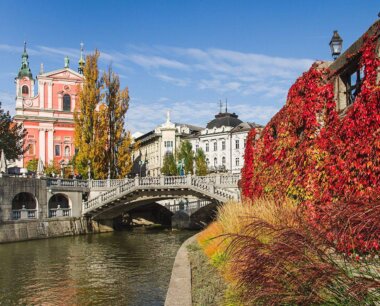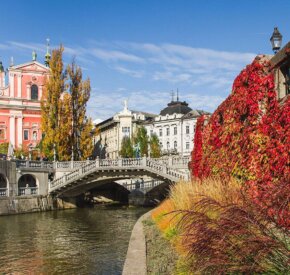
Switzerland by train: 8 of the most spectacular rail journeys
Spanning about 1,280km, linking nine destinations, passing 11 lakes and skirting innumerable mountains, the Grand Tour of Switzerland is arguably the world’s best rail adventure. Here’s how to do it…
Covering around 1,280km, linking nine destinations, passing 11 lakes and skirting innumerable mountains, the Grand Tour of Switzerland is arguably the finest rail adventure in the world. Split into eight distinct stages – pick and choose which sections to ride or link them for a continuous journey around the country – it’s a dramatic unravelling of high passes, palm trees and everything in between. Put simply, there’s no better way to see Switzerland…

1. City to summit: Zurich to Lucerne

The mountains get closer with every mile on this all-too-swift glide from Switzerland’s financial metropolis towards the Bernese Oberland. Leaving Zurich, the train traces Lake Zug and enters the gentle Swiss midlands. At elegant, water’s edge Lucerne, the premium panoramic carriages of the Luzern–Interlaken Express await, so you can better view the transition from pretty pasture to snow-capped summits. Disembarking at Interlaken, a lake on each side and mighty mountains ahead, you’re in alpine heaven.

2. Wilderness and wine: Interlaken to Montreux

Begin this fine journey feeling ein bisschen German, end feeling un petit French. The westward route from Interlaken crosses the language line, giving the sense of two destinations for the price of one. It begins with a glorious jaunt along Lake Thun, with alpine views to the south. At Zweisimmen, hop aboard the first-class GoldenPass line – it’s the best way to travel to chic Montreux, watching castles, cow pasture, neat vineyards and, finally, the shores of Lake Geneva roll by.

3. Making for the Matterhorn: Montreux to Zermatt

Montreux, with its Charlie Chaplin connections and fairytale Chillon Castle, is an eclectic delight. But the mother of mountains beckons. Ride the railway away from Lake Geneva and through the verdant Rhone Valley to Visp. From here the tracks get even more interesting: the narrow-gauge Matterhorn Gotthard Railway plunges through Switzerland’s deepest-incised valley, grinding up 900m in altitude to reach the spectacular car-free village of Zermatt, with the mighty Matterhorn looming behind. Hop off the train to explore: not only are there 400km of walking trails winding around Zermatt, you’ll also find Europe’s highest cableway, which can take you up to 3,883m for extreme close-ups with the high-alpine world.


4. Going slow: Zermatt to St Moritz

The Glacier Express is not entirely well named. The glaciers aren’t in doubt, but there’s nothing very speedy about it. And it’s all the better for it. This luxuriously leisurely rail route takes almost eight hours to run from Zermatt, in the shadow of the Matterhorn, to glamorous St Moritz. But that’s because it has to traverse some of the most challenging and majestic scenery in the world. The Glacier Express requires 91 tunnels and 291 bridges to master the mountains, cliff-sides, deep valleys and plunging ravines. Perhaps most impressive are the crossings of the 2,033m Oberalp Pass and the elegant Landwasser viaduct, though it’s tough to pick a highlight from this world-class ride.

5. Edging towards Italy: St Moritz to Lugano

One minute you’re gazing at icy glaciers, a few hours later you’re staring at swaying palms – that’s the beauty of the Bernina Express, which crosses the Alps into Italy, before delivering you into the Med-like Swiss Ticino. Starting in sophisticated St Moritz, high amid the lakes and mountains, you’ll surge south following the UNESCO-listed route of the Rhaetian Railways, built in 1910 and the highest transalpine railway of them all. It crosses country borders at the Bernina Pass before swooping through the Val Poschiavo towards Tirano. You won’t stay in Italy long though – the Bernina Express Bus will scoop you up for the ravishing road trip via Lake Como to Lugano, the main hub of Italian-influenced Switzerland.

6. Rail and sail: Lugano to Lucerne

Lugano has handsome castles, a laidback vibe and excellent ice cream. However, once you’ve had a quick taste of la vita bella, it’s time to return north, as the Grand Tour turns back to the mountains. This time, the first-class carriages of the Gotthard Panorama Express will deliver you from the Ticino to lush central Switzerland, via the engineering marvel that is the original Gotthard Tunnel, an ingenious system of spirals, loops and bridges that first opened in 1882. Popping out the other side, you’re delivered back into an alpine idyll, which continues all the way to lakeside Flüelen. Here, switch from railing to sailing, for an unhurried voyage across Lake Lucerne.

7. Green and pleasant lands: Lucerne to St Gallen

Lucerne is blessed: sitting on the lakeside, surrounded by lush pasture and formidable mountains, it’s the most picturesque of cities in the most spectacular of locations. The peaks might not be Switzerland’s highest, but they’re still impressive, and show a different side to this alpine nation. Leaving Lucerne on the Voralpen Express, you gain excellent views of the region’s most iconic peaks – such as Mount Pilatus and Rigi – before skimming northeastwards across upland moor and over Lake Zurich. There’s just the short matter of crossing the Sitter Viaduct – at 99m, Switzerland’s highest railway bridge – before historic St Gallen hones into sight.

8. A water wander: St Gallen back to Zurich

Founded by an Irish monk in the seventh century, St Gallen has been a cultural hub for centuries – it’s certainly well worth exploring its ancient Abbey and car-free old centre before jumping on the train one last time. The final leg of this epic rail ride can, at times, feel more like a cruise. For 40km the tracks skirt the shore of Lake Constance, Central Europe’s third-largest lake. Then the train picks up the River Rhine, following it downstream, via Schaffhausen’s 16th-century Munot Fortress, on its journey to Zurich. A Grand Tour indeed.




















